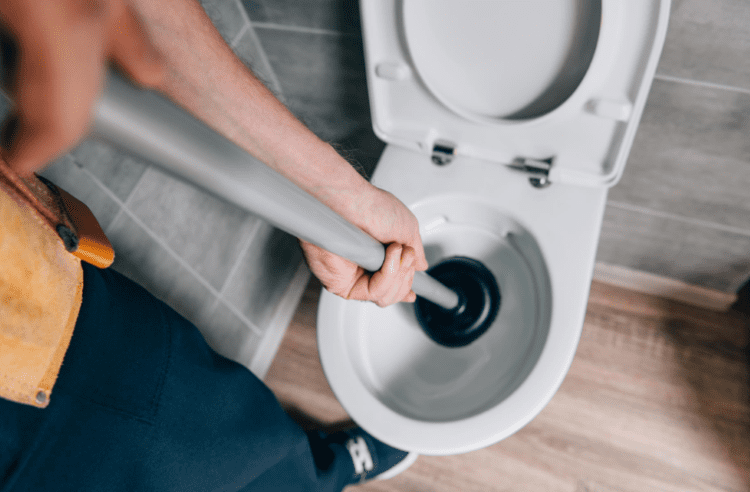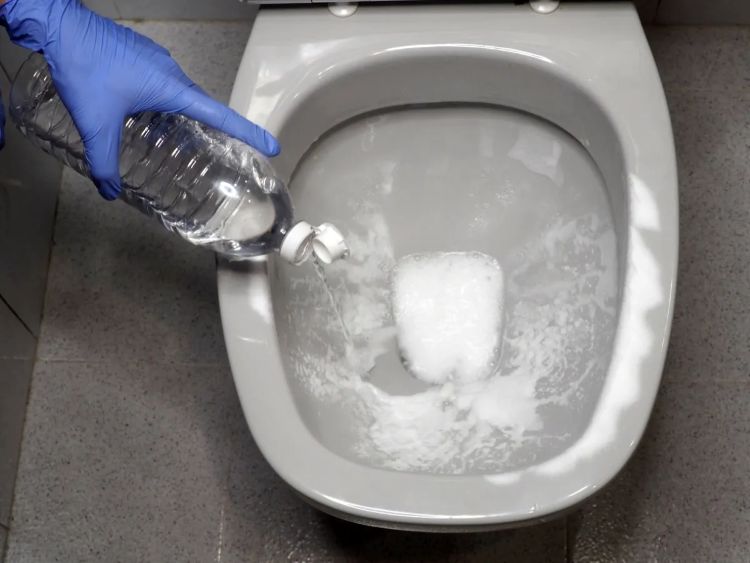How to Unblock a Toilet and Prevent Clogs in the Future

Essential Tools for Unblocking a Toilet
When it comes to unblocking a toilet, having the right tools on hand can make all the difference. Below are the key tools and supplies you’ll need to tackle clogs effectively.
Plunger
A plunger is often the first tool that comes to mind for toilet clogs. There are two main types:
- Flange Plunger: This type features a rubber flap (or flange) that extends from the bottom. It’s specifically designed for toilets and creates a better seal, providing more suction power for effective unclogging.
- Cup Plunger: This standard plunger has a flat rubber cup and is more suited for sinks or tubs. While it can work in a pinch, it’s less effective for toilets.
Usage Tips:
- Ensure a tight seal around the toilet drain to maximise suction.
- Use a firm, up-and-down motion, allowing water to fill the plunger cup before each push to create pressure.
- Repeat the process several times if necessary, and be patient—it may take a few tries to clear the blockage.
Drain Snake
A drain snake is a flexible tool designed to reach deep into the toilet drain to clear stubborn clogs that a plunger may not be able to tackle.
Explanation of Use:
- Insert the snake into the toilet bowl and carefully push it down the drain until you feel resistance.
- Turn the handle clockwise to break up or hook onto the clog. This method can be particularly effective for foreign objects lodged in the pipes.
- Once the clog is dislodged, flush the toilet to ensure everything is cleared.
Safety Tip: Always wear gloves when using a drain snake, as it can come into contact with waste materials.


Drain Cleaner
Drain cleaners are chemical solutions designed to dissolve clogs.
- Liquid Drain Cleaners: These are often harsh chemicals that can cause corrosion in pipes over time. Use them with caution and only as a last resort.
- Enzymatic Drain Cleaners: These are more eco-friendly alternatives that use enzymes or bacteria to break down organic matter without harmful chemicals. They’re safer for your plumbing and the environment.
Importance of Choosing Chemical-Free Solutions: Opting for non-toxic drain cleaners not only protects your plumbing but also reduces the risk of harmful fumes and environmental damage. Whenever possible, consider using homemade solutions like vinegar and baking soda for a natural, effective approach.
Household Tools
Sometimes, you can use common household items as effective alternatives to specialised tools.
- Wire Coat Hanger: Unwind the hanger to create a straight, flexible tool that can help dislodge minor clogs. Be careful not to scratch the toilet bowl.
- Bucket: If the toilet is overflowing, a bucket can be used to remove excess water before attempting to unclog it.
Safety Tips: Always wear gloves and, if necessary, goggles when working with any tools or cleaning solutions to protect yourself from spills and splashes. If using a wire coat hanger, be gentle to avoid damaging the toilet’s porcelain. Equipping yourself with these essential tools and supplies will prepare you to tackle any toilet clog that comes your way.
Step-by-Step Guide to Unblocking a Toilet
Unblocking a toilet can often be tackled with a few simple steps. Here’s how to assess the situation and employ effective methods to clear the clog. Before jumping into action, it’s essential to assess the blockage to determine the appropriate method for unblocking the toilet.
- Surface-Level Blockage: If the toilet is filling up slowly or flushing weakly, the clog is likely near the toilet bowl. This type of blockage is usually caused by excessive toilet paper, waste, or small objects.
- Deeper Blockage in the Plumbing Pipe: If the toilet is overflowing or multiple fixtures in your home are affected (such as sinks or bathtubs), the clog may be deeper within the plumbing system. This could indicate a more significant issue, such as a sewer line blockage.
Common Causes of Clogs:
- Waste Build-Up: Over time, too much waste or toilet paper can accumulate and create a blockage.
- Flushing Habits: Items that are not meant to be flushed (like feminine hygiene products, wipes, or paper towels) can contribute to clogs. It’s important to educate all household members on what can and cannot be flushed.
Effective Methods to Unblock a Toilet


Using a Plunger - Step-by-Step
- Choose the Right Plunger: Ensure you have a flange plunger for toilets.
- Position the Plunger: Place the plunger in the toilet bowl, ensuring the flange is inserted into the drain hole.
- Create a Seal: Push down gently to create a seal around the drain.
- Pump Up and Down: Use a firm, controlled motion—push down and pull up without breaking the seal. Do this for about 15-20 seconds.
- Check for Movement: After plunging, remove the plunger quickly and check if the water drains. If it does, flush to ensure everything is clear.
- Repeat if Necessary: If the toilet is still clogged, repeat the plunging process until the blockage clears.
Using a Drain Snake - Step-by-Step
- Insert the Drain Snake: Carefully feed the snake into the toilet drain until you feel resistance.
- Turn the Handle: Rotate the handle clockwise to break up or hook onto the clog. Keep turning until you feel the blockage give way.
- Remove the Snake: Carefully pull the snake out of the toilet, being cautious of any debris it may bring with it.
- Flush the Toilet: Once the clog has been dislodged, flush the toilet to ensure everything flows smoothly.
Using Natural Drain Cleaners
You can try using homemade natural drain cleaners (DIY Solutions):
Vinegar and Baking Soda:
- Pour about a cup of baking soda into the toilet bowl.
- Follow it with a cup of vinegar.
- Allow the mixture to fizz and work for about 30 minutes.
- Flush the toilet to see if the clog has cleared.
This method is great for minor clogs and helps prevent future blockages without harsh chemicals.


Household Items
In a pinch, you can use common household items to help dislodge a clog. Using a wire coat hanger:
- Unwind the coat hanger to create a long, flexible tool.
- Gently insert it into the toilet drain and try to dislodge the clog.
- Be careful not to scratch the porcelain.
- If the toilet is overflowing, use a bucket to remove excess water before attempting to unclog it.
When to Call a Professional Plumber
- The above attempts failed. If you’ve tried the above methods multiple times without success, it may be time to call in a professional plumber.
- Multiple fixtures affected. If you notice that other drains in your home are also slow or clogged, this could indicate a deeper plumbing issue, such as a blockage in the main sewer line.
- Frequent blockages. If you find that your toilet frequently becomes clogged despite regular maintenance, there may be an underlying issue that requires a professional diagnosis.
Preventing Toilet Clogs in the Future
Preventing toilet clogs is key to maintaining a smoothly functioning bathroom and avoiding the frustration of dealing with blockages. Here are some mindful flashing habits to help you keep your toilet clear and reduce the risk of clogs.
Items That Should Not Be Flushed
- Feminine Hygiene Products: These can expand and cause significant clogs.
- Baby Wipes and Cleaning Wipes: Even those labeled “flushable” can lead to blockages; dispose of these in the trash.
- Paper Towels and Napkins: These don’t break down as easily as toilet paper.
- Condoms: These can cause severe clogs and are not biodegradable.
- Dental Floss and Hair: Both can wrap around pipes and cause build-up over time.
For reliable, expert assistance with any plumbing issues, reach out to the team at Ironclad Plumbing! Serving the Blue Mountains, Penrith, and Lithgow areas, we're here to help you keep your plumbing running smoothly. Call us today to get fast, professional service you can count on!
Call 0474 318 136
Or fill in the form below and we’ll call you back.
